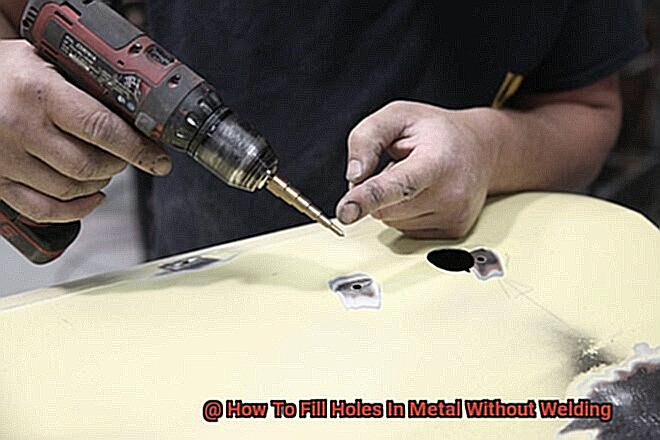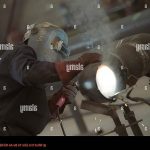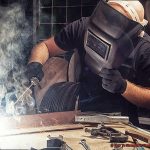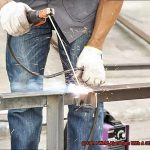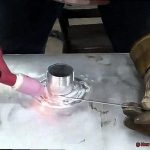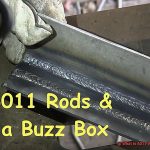Metal is a versatile material that’s used in various industries, from construction to DIY projects. But what happens when you accidentally create holes in your metal surface? Welding is the traditional method for repairing metal, but it can be expensive and requires specialized skills and equipment. The good news is that there are ways to fill holes in metal without welding.
Picture this: a rusty metal fence with unsightly holes, or a car body with visible punctures. Welding might seem like the only solution, but it’s not always ideal when working with thin sheets of metal. In this article, we’ll explore simple yet effective methods to fix holes in metal without welding.
We’ll cover everything from using metal patches to filler compounds and highlight which materials work best for different types of metals, including aluminum and stainless steel. With our step-by-step guides, you’ll be able to tackle holes of all sizes like a pro.
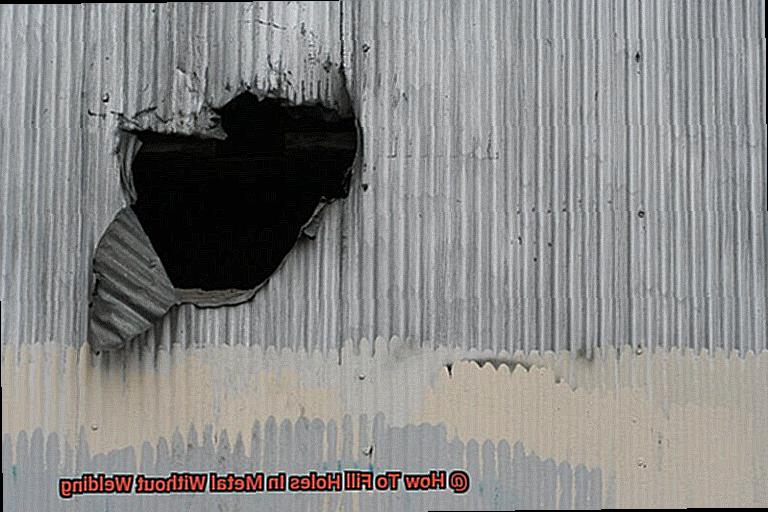
By the end of this post, you’ll have all the practical knowledge you need to fix holes in your metal surfaces without welding. So let’s dive right into these fantastic methods and get started on restoring your damaged metal.
Adhesive Bonding for Small Holes
Contents
Fear not, because adhesive bonding is an excellent alternative. This method uses a high-strength adhesive to bond a patch over the hole, resulting in a strong and durable repair.
The first step in adhesive bonding is to clean the hole thoroughly of any debris or contaminants. Once the hole is clean, a patch made of metal or composite material can be cut and shaped to fit the hole. The adhesive is then applied to both the patch and the metal surrounding the hole. Choosing the right adhesive is crucial as different adhesives have varying strengths and properties. Epoxy adhesives are a popular option due to their excellent bonding strength and ability to withstand harsh environments and high temperatures. For small holes, cyanoacrylate adhesives, also known as “super glues,” can be used since they bond quickly and securely.
After applying the adhesive, carefully position and press the patch firmly over the hole. Ensure that sufficient time is allowed for the adhesive to cure completely before using the repaired metal piece. Adhesive bonding provides a reliable repair that can withstand harsh conditions and high temperatures.
It’s important to note that this method is only suitable for small holes as larger holes may require additional reinforcement such as brazing or soldering. Therefore, it’s vital to carefully consider which method is best suited for your needs before proceeding with any repairs.
Brazing for Larger Holes
Don’t worry – brazing is here to save the day. This process involves melting a filler metal, called brazing alloy, into the hole to create a strong and long-lasting bond without the need for welding.
But before you get started, it’s crucial to prep your metal surface properly. Clean it thoroughly with a wire brush or sandpaper to remove any dirt, rust, or other contaminants that could weaken the bond. With a clean surface, it’s time to select the right brazing alloy for your needs. Different alloys work best for different types of metal and have varying melting temperatures.
Once you’ve selected your alloy, heat it up in a torch until it melts. Then, using either a filler rod or brush, apply it to the hole. The next step is where things get tricky – heating the metal with a torch until it reaches the melting point of the brazing alloy. Concentrate the heat around the hole to prevent overheating and warping of the surrounding metal. When the brazing alloy has melted and filled the hole, allow it to cool slowly.
Brazing provides a strong and durable bond that can handle high temperatures and stress. It’s an ideal solution for repairing larger holes in metal without welding. However, it does require some skill and experience to ensure that the heat is applied correctly and that the brazing alloy is melted evenly.
Soldering for Smaller Holes
Soldering involves using a low-temperature metal alloy called solder to create a bond between the metal surfaces. It’s a versatile method commonly used in electronics and plumbing, but it can also be used for metalwork.
To start the soldering process, make sure to clean the metal surface thoroughly with a wire brush or sandpaper. This ensures that the solder adheres correctly to the metal. Next, apply a flux to the surface of the metal to remove any oxides and contaminants that may interfere with the bonding process.
Once you’ve applied the flux, heat the metal surface with a soldering iron until it reaches the melting point of the solder. Hold the soldering iron at an angle and feed the solder wire into the joint. The heat from the soldering iron will melt the solder and allow it to flow into the joint.
As the solder cools, it will harden, creating a strong bond between the metal surfaces. Trim off any excess solder with wire cutters and sand down any rough edges with sandpaper.
Soldering is an effective technique for filling smaller holes in metal because it creates a robust bond that can withstand vibrations and movement. Plus, it’s relatively simple to do and requires minimal equipment. However, keep in mind that if you’re dealing with larger holes or heavy-duty applications, welding might be a better option.
Considerations When Choosing a Method
Filling holes in metal without welding can be a daunting task, but it doesn’t have to be. With so many methods available, it’s important to consider several factors when choosing the right one for your repair needs. Here are five essential considerations to keep in mind:
Strength and Durability
The strength and durability required for the repair should be at the top of your list when selecting a method for filling holes in metal without welding. If you need a strong and long-lasting repair, then welding may be the best option. However, if the hole is small or in a location where welding is not possible or practical, then other methods will need to be considered.
Appearance of the Repair
If you’re working on a visible surface, then the appearance of the repair is an essential consideration. You will want a method that produces a clean and smooth finish. Bondo and other fillers can work well for this purpose.
Type of Metal
The type of metal you are working with is also crucial when selecting a method for filling holes in metal without welding. Some metals, like aluminum, require special techniques and materials for filling holes. It is vital to research and select the appropriate method for the specific type of metal you are working with.
Personal Skill Level
It’s important to consider your own skill level and experience with different methods when choosing a technique for filling holes in metal without welding. Some techniques may require specialized tools or expertise, while others may be more accessible to beginners. Whatever you choose, make sure you feel comfortable executing it confidently.
Cost
Last but not least, cost is another crucial factor when selecting a method for filling holes in metal without welding. Some methods may require expensive equipment or materials, while others may be more affordable. It’s important to consider your budget and choose a method that meets your needs without breaking the bank.
In conclusion, considering factors such as strength, appearance, type of metal, personal skill level, and cost is critical when selecting a method for filling holes in metal without welding. By weighing these considerations and selecting the appropriate method, you can achieve a successful repair that meets your needs.
Benefits of Filling Holes without Welding
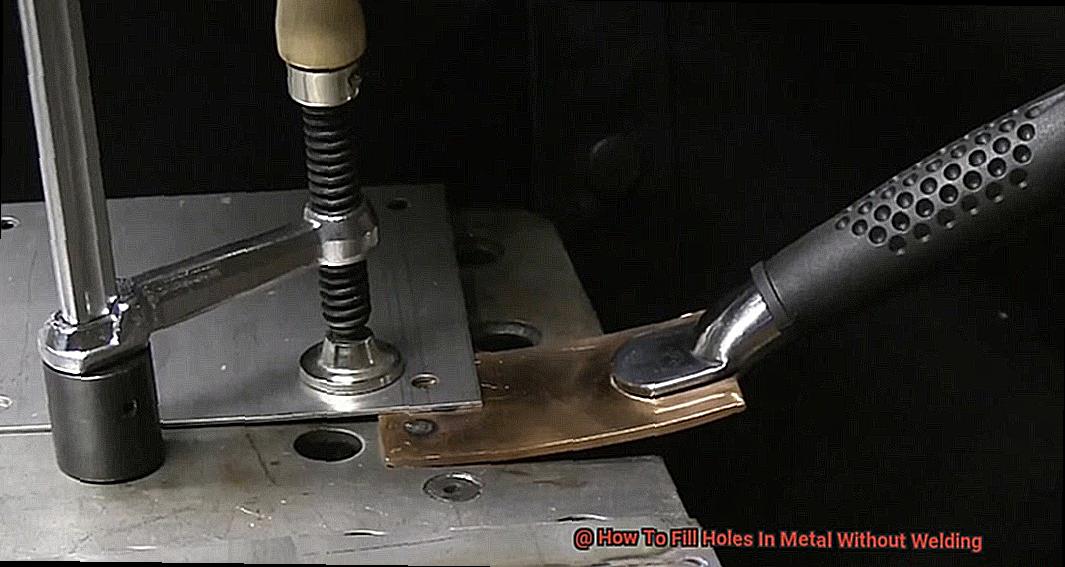
When it comes to fixing holes in metal surfaces, welding is often the default solution. However, have you ever considered the benefits of filling holes without welding?
Firstly, welding can be a tedious and expensive process, especially if you lack the necessary equipment or expertise. Opting for filling holes without welding can save you both time and money while still getting the job done.
Secondly, welding can weaken the surrounding metal and cause further damage. Filling holes without welding eliminates this risk and preserves the strength and durability of the metal surface.
Thirdly, filling holes without welding can result in a more satisfactory aesthetic outcome. Welding can leave visible marks and blemishes on the metal that may detract from its appearance. Conversely, filling holes without welding creates a seamless finish that looks as good as new.
Lastly, choosing to fill holes without welding is a safer option. Welding generates high heat that can produce harmful fumes and sparks. By avoiding welding, you minimize the risk of injury and damage to surrounding objects.
Overall, filling holes without welding provides a quicker, cost-effective, and safer alternative to welding. It ensures that your metal surface maintains its strength, looks flawless, and is safe for everyone involved.
Potential Challenges of Filling Holes without Welding
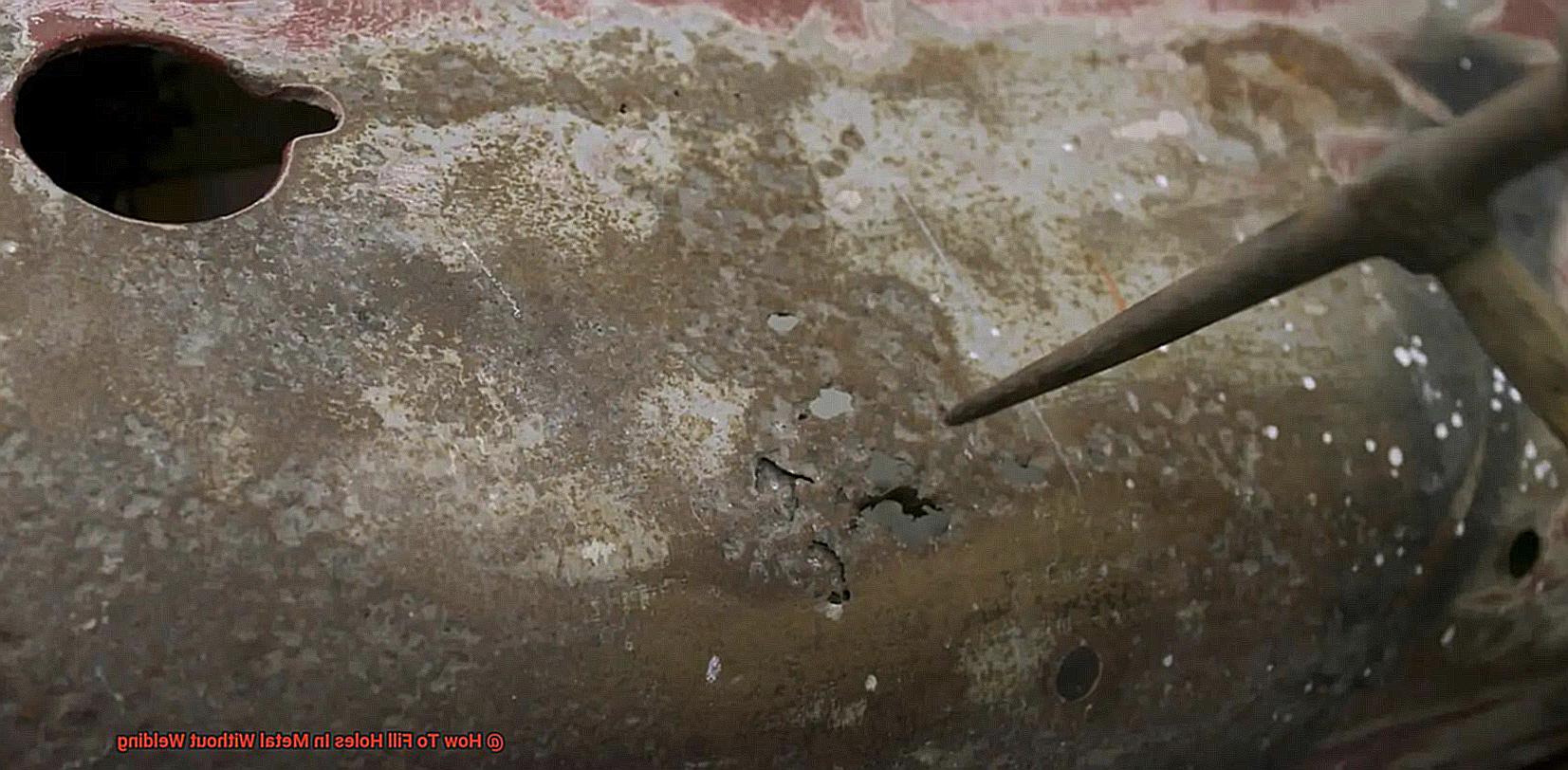
While non-welding solutions can be cost-effective and time-saving, there are potential challenges that you should consider before starting your repair job.
One of the biggest challenges is finding the right filler material that will provide a strong and lasting bond to the metal surface. Certain materials may not be compatible with certain metals, or they may not be able to withstand extreme temperatures or weather conditions. Therefore, it’s important that you choose carefully to ensure that you have a material that will work effectively for your intended use.
Another challenge is achieving a smooth and seamless finish. Filling a hole without leaving bumps or uneven surfaces can be difficult, and this can affect the appearance and performance of your metal object. Furthermore, if the hole is located in a visible area such as on a car body or household appliance, it’s important to ensure that the filled area matches the surrounding surface in color and texture.
Ensuring the strength and durability of the repair is also crucial. Welding creates a strong, permanent bond between two pieces of metal. But when filling a hole without welding, it’s important to choose a filler material that will provide similar strength and durability. Otherwise, the filled area may be prone to cracking or breaking over time, which can be dangerous in certain applications such as automotive or industrial machinery.
Lastly, there may be limitations on the size and shape of holes that can be filled without welding. Very large or irregularly shaped holes may require welding or other more specialized repair techniques.
Despite these challenges, filling holes without welding can still be a viable option if you choose the right filler material and follow proper techniques for preparation and application. By doing so, you can achieve a strong and seamless repair that will hold up over time.
K4j8TU7Byfs” >
Conclusion
In conclusion, filling holes in metal without welding is not only feasible but also practical and cost-effective. With a range of techniques available, it’s crucial to consider various factors such as hole size, metal type, personal skill level, repair appearance, and cost when selecting a method.
For small holes requiring a robust and durable bond, adhesive bonding is an effective option. For larger holes that can handle high temperatures and stress, brazing is ideal. Soldering works best for smaller holes that require a strong bond that can withstand vibrations and movement.
While there may be potential challenges such as finding the right filler material or achieving a smooth finish while ensuring strength and durability, these hurdles can be overcome with proper preparation and application techniques.
Filling holes in metal without welding offers numerous advantages over traditional welding methods. It saves time and money while preserving the strength and durability of the metal surface.
Additionally, it creates a seamless finish that looks brand new while providing a safer alternative by minimizing the risk of injury or damage to surrounding objects.
